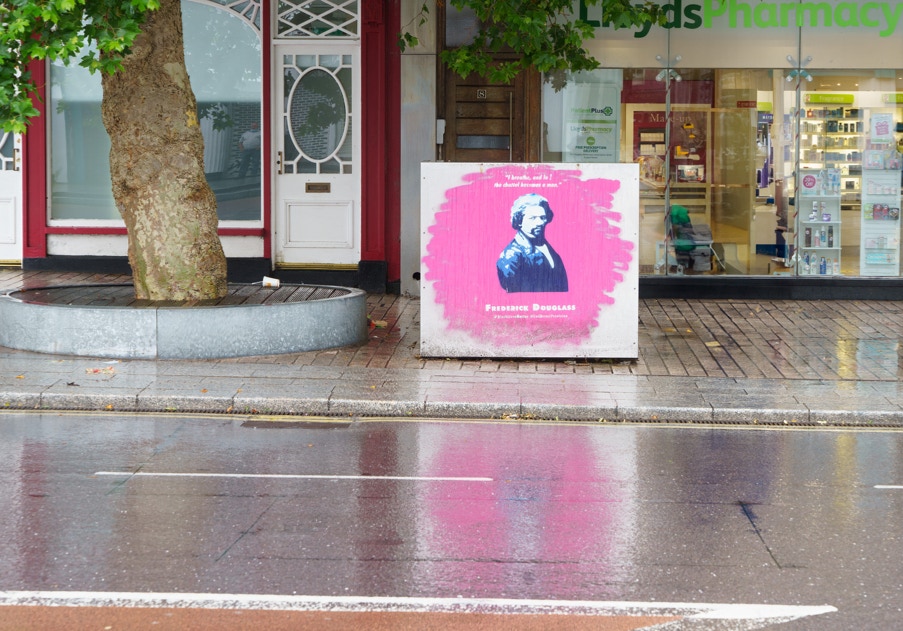02/08/2023
It should be mentioned that I have been aware of Frederick Douglass since 1964 because I had an American teacher who had been a missionary priest and had been a great admirer of Frederick Douglas and Susie King Taylor [the first African American Army nurse].
I included this photograph because of the following news item [31 July 2023] "A striking bronze statue of author, anti-slavery campaigner and early champion of women’s rights Frederick Douglass has been unveiled in Belfast city centre." The lifesize statue was created by Scottish figurative sculptors Alan Beattie Herriot and Hector Guest. It is located beside the historic First Presbyterian Church in Rosemary Street where Douglass delivered lectures during his time in Belfast. I plan to photograph this memorial when I next visit Belfast.
Frederick Douglass (born Frederick Augustus Washington Bailey, c.February 1817 or 1818 – February 20, 1895) was an American social reformer, abolitionist, orator, writer, and statesman. After escaping from slavery in Maryland, he became a national leader of the abolitionist movement in Massachusetts and New York, during which he gained fame for his oratory and incisive antislavery writings. Accordingly, he was described by abolitionists in his time as a living counterexample to enslavers' arguments that enslaved people lacked the intellectual capacity to function as independent American citizens. Northerners at the time found it hard to believe that such a great orator had once been enslaved. It was in response to this disbelief that Douglass wrote his first autobiography.
Douglass wrote three autobiographies, describing his experiences as an enslaved person in his Narrative of the Life of Frederick Douglass, an American Slave (1845), which became a bestseller and was influential in promoting the cause of abolition, as was his second book, My Bondage and My Freedom (1855). Following the Civil War, Douglass was an active campaigner for the rights of freed slaves and wrote his last autobiography, Life and Times of Frederick Douglass. First published in 1881 and revised in 1892, three years before his death, the book covers his life up to those dates. Douglass also actively supported women's suffrage, and he held several public offices. Without his knowledge or consent, Douglass became the first African American nominated for vice president of the United States, as the running mate of Victoria Woodhull on the Equal Rights Party ticket.
Douglass believed in dialogue and in making alliances across racial and ideological divides, as well as in the liberal values of the U.S. Constitution. When radical abolitionists, under the motto "No Union with Slaveholders", criticised Douglass's willingness to engage in dialogue with slave owners, he replied: "I would unite with anybody to do right and with nobody to do wrong."

